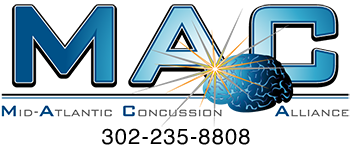
Patients often ask us why there has been such a big fuss about concussions (mild traumatic brain injuries, or TBI) recently. The reality is that, if left untreated, concussions can lead to a higher risk for a second concussion, which, if this occurs before the first concussion is resolved, can lead to permanent brain damage, swelling of the brain and possible death. Other reasons for the immediate care and management of concussion symptoms care include:
- More than four million concussions occur annually when there is a bruise to the soft tissue of the brain.
- Regardless of the injury severity, concussions can’t be seen on a CAT scan or MRI.
- Concussion rates are increasing, especially among middle school athletes.
- Concussions aren’t always the result of an athletic injury; they can result from motor vehicle accidents, work injuries, falls or any daily mishap.
Is it a Concussion? Find out Here Faster with BrainScope® One.
Too often, patients rush to the ER after a head injury, despite the fact that the CT scan often ordered by the attending physician cannot assess concussions. The scan exposes the patient, often unnecessarily, to radiation.
The MAC Alliance can now screen for concussions and other serious brain injuries with a new, FDA-cleared device called the BrainScope® One. This safe and accurate assessment tool is cleared for patients 18-85 years of age, for use within three days of injury.
When Should You Seek Help for a Possible Concussion?
If symptoms such as headaches, dizziness, fatigue or fogginess last more than three to five days after an injury despite brain rest instructed by your primary care physician, or you return to school or work and the symptoms persist or worsen, you should seek additional medical help immediately. Other mild TBI and/or neurological symptoms not to ignore include the inability to tolerate car travel or crowds and an ongoing sensitivity to light and noise.
How is Today’s Concussion Treatment Different from Past Treatment?
The current approach to concussion is no longer passive. Although brain rest is still crucial, active physical and vestibular (dealing with balance) treatment should be initiated within a few days of the injury. Walking and small group socialization is encouraged even before returning to school or work.
Difficulty sleeping over the first week can be treated successfully with safely prescribed sleep aids that have been well-proven by research done at UPMC. Ongoing headaches, fogginess and light and sound sensitivity after one week can be successfully treated with non-addictive nerve modulators also well-proven by research done at UPMC.
Brain Rest Protocol
The MAC Alliance recommends that concussion patients refrain from any academics, homework or physical work until their brain is rested (no puzzles, reading, homework, email, internet, texting, gaming) and they are re-evaluated by a certified health provider.
Other brain trauma rest tips:
- Drink lots of fluids two-three times per day, especially sports drinks (Gatorade, PowerAde, Propel, coconut water, etc.)
- Obtain seven to eight hours of sleep every night, with bedtime targeted before 11 pm.
- Avoid texting and computer usage (no Facebook or other social media!).
- View television in only 30-60 minute increments, at a maximum of three hours per day (or only one hour if back at school or work), on a large screen (not on a tablet, desktop or laptop) as long as symptoms do not worsen.
- Limit phone calls to 15 minutes, with no more than four per day.
- Listen to soft music if you like, but without ear buds or head phones.
- Limit any daytime naps to less than 30 minutes.
- Take daily walks. Wear sunglasses if you’re light sensitive.
- Limit travel to one-half hour per day in any vehicle.
Allowable activities include listening to audiobooks, crafts, drawing, coloring, sewing, knitting, cooking and simple games such as Uno or Checkers. These activities should be kept to 30-minute intervals or less. A trip to an art or craft store like Michael’s or AC Moore can help prevent boredom. Don’t forget that in bad weather patients can walk indoors at local malls early in the morning before the crowds arrive.
For More Information
MAC Alliance partners test, diagnose and treat potential brain trauma with FDA-approved tools such as the ImPACT test, BrainScope and RightEye eye-tracking technology.
We are a growing network of certified medical professionals and athletic trainer affiliates located throughout Delaware, Maryland, New York, Pennsylvania, Virginia and New Jersey. Concussion testing, treatment and long-term care management is offered by MAC affiliates in your area.







